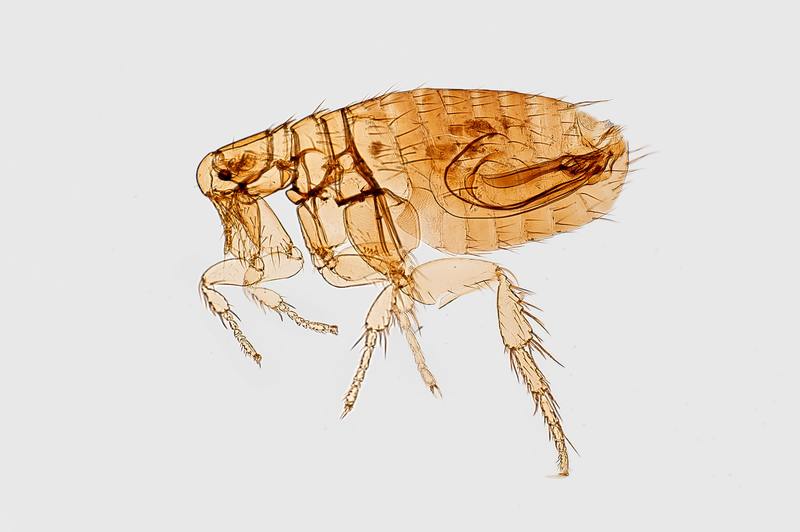Flea infestations that warrant professional treatment can make one wonder how do pest control get rid of fleas. It will take a few preparations and a bit of patience for pest control to do its thing, so fret not.
Here, we’ll go over the fundamental things you need to know about professional flea treatment.

How Do You Go About Treatment?
Part #1. Before treatment
Sure, the pest control company you’ll get in touch with will do most of the heavy lifting by either spraying or fogging. Still, to ensure a flea-free home, you’ll have to prepare your home to maximize its effectiveness.
Suppose you have any furry or feathered companions who may be dealing with fleas the hardest. In that case, you’ll spend most of the preparation dealing with their belongings.
Thoroughly wash their beddings with hot water. If you sense that fleas may have one their worst on the beddings, it may be time to dispose of and replace beddings completely.
You’ll also have to wash all your bed linens with hot water as well. Fleas traveling on pet fur could quickly infest your bed.
You’ll also want to keep all your stuff, including toys, in a safe area during the treatments.
If your furry or feathered friends suffer badly from fleas, you can use the time spent out of the house to treat your pets. While pest control works on your home, your pets can take a visit to the vet, or you can treat your pets’ flea problems yourself.
Make sure your pets are washed meticulously with the correct products if you prefer doing it yourself. You’ll want to guarantee that the problem doesn’t reappear when you bring them back home.
If you have pet fish, keep the tank tightly covered and turn off pumps for the duration of the treatment.
Vacuum your home thoroughly, including tight areas under or between cushions. Flea eggs and droppings could scatter along with the floors and furniture, thus possibly making an infestation worse.
If your vacuum uses disposable vacuum bags, make sure to close them tightly and discard them in an outside receptacle.
For reusable vacuum bags, empty them in a disposable bag or container that you can tightly close. Like with beddings and linens, wash them thoroughly under hot water.
Cover securely and keep any food safely hidden away to avoid contamination.
These are the basics of prepping your home for flea control treatments. Suppose you want to go in-depth on keeping everything secure during general treatment.
In that case, we also have a comprehensive guide detailing how does pest control work.
Part #2. After treatment
You can expect to stay out of the home for at least three to five hours. Still, it may take longer depending on the severity and method your pest control company uses.
When they give the “OK” signal, there are a few things you need to observe post-treatment.
While it may be tempting to clean, refrain from doing so for at least two weeks. You may accidentally wipe off the pest-eliminating chemicals.
In this two-week time frame, the pesticide will have ample time to deal with fleas. If the chemicals are a lot to handle in these two weeks, you might want to keep windows open for the time being.
Another thing to remember is that even after treatments, you’ll still occasionally see some fleas or signs of them in your home. You don’t need to worry too much as the fleas will die out completely in time once exposed to the residual pesticide.
You’ll have to deal with the resurgence, however. Once it’s okay to clean, vacuum regularly.
The corpses, droppings, and eggs will remain when fleas die out. Cleaning these out will prevent more pests from coming in.
It may take about four weeks for the flea problem to take care of itself, so patience is key here.
In some instances, pest control may need a few more visits. If things come to that point, we’ve got you covered with this handy article on how often should pest control be done.
Where Do Flea Problems Originate?
To figure out more preventative measures, it may be a good idea to find out where the problem begins.
When you take your pets outside, they could become potential flea hosts. This possibility could happen if they come in contact with wild animals such as skunks, squirrels, rats, and other common outdoor critters.
Fleas may even wait for hosts in tall grass and bushes and make a move when they find an animal they can infest.
You may also wonder if fleas can be a problem even if you don’t have pets. It may be surprising to know that fleas can also infest pet-free homes.
Fleas could stick around if the previous tenant had flea-ridden pets. Also, as stated above, wildlife that frequents your residential area or even mice living in the walls could harbor fleas and spread them.
Being aware of fleas’ origins can help you prepare for and plan pest control strategies.
Conclusion
Fleas can be a menace to deal with, so it helps to figure out how to go about pest control treatments and how to deal with the aftermath. With these tips, you may not need to wonder how do pest control get rid of fleas and can figure out the next course of action.
